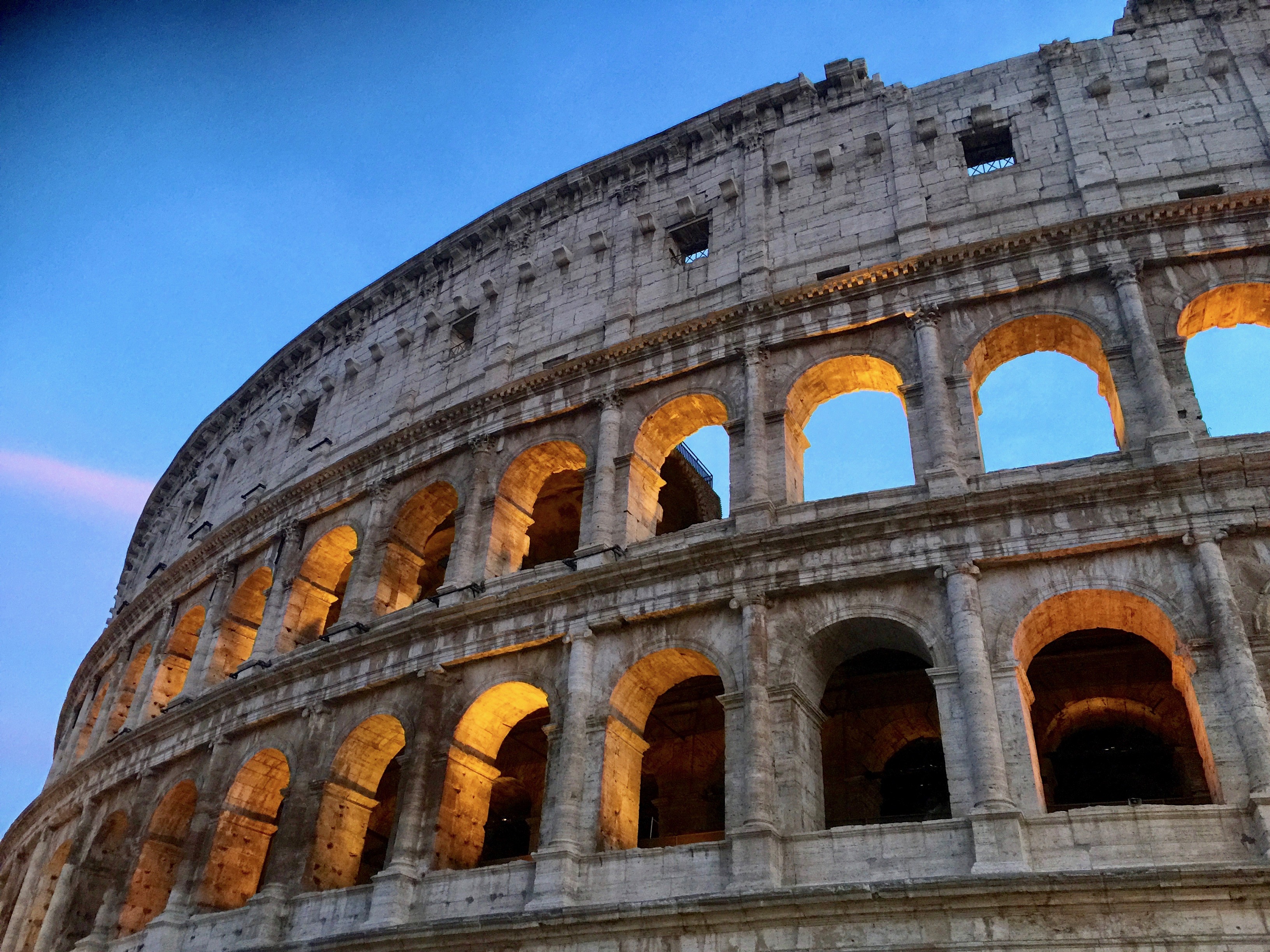The Colosseum
Those born in Rome sometimes feel a sort of call within themselves, it is the city that invites you to retrace history, to immerse yourself in its glorious past. We then find ourselves walking along Via Claudia, coming from Celio, until we reach the Colosseum, from above, the largest amphitheater in the world, inaugurated in 80 AD by the Emperor Titus. The image that is painted before the eyes is pure poetry, it is authentic energy, the grandeur of the structure, the grandeur of the work, everything communicates strength and ingenuity, everything tells us about the ancient splendor of this wonderful city. Pushing your gaze beyond the marble arches you can glimpse the interior, closing your eyes for a few seconds you can still hear the cries of the spectators and the roar of the lions who decided the fate of the people in this place. How many stories intertwined in this place, how many broken lives, how much glory, how much amazement, how much eternal memory originated among the stones and statues of this immense work! Stopping to admire the history unfolding before our eyes is almost a duty. The thought often runs to the idea that a foreign tourist could have traveling the same road and admiring the remains of ancient Rome, observing the Colosseum that rises majestically in front of him. These places excite those who were born and lived there, but what does it really arouse in those who come here from afar to experience so much beauty? Taking a walk among the ruins of Rome forever marks people's souls, Rome is never forgotten, even if its origins are elsewhere, Rome knows how to adopt your heart and know how to make you feel like the son of an ancient civilization.
Imperial Forum
Leaving the Colosseum behind, the walk continues along via dei Fori Imperiali, in the direction of Piazza Venezia.

The gaze turns avidly both to the right and to the left, to understand, learn, marvel at the meticulous care that the Romans had in building and developing what was the heart of the ancient city, the Forum. Everything that the passage of time has decided to leave us is preserved and today, thanks to a redevelopment program launched a few years ago, it is possible to attend cultural shows that through audio and holographic applications reconstruct before our eyes what the Forum was like and the life around it, in the various eras. Most of what was built in the Imperial Forums we owe it to Caesar and Augustus, who in less than two centuries, starting from 46 BC, changed the face of the city, leaving to posterity precious testimonies of what Rome was. The Forum was the pulsating center of the city, where Roman law and law were born, capable of influencing the laws and legal doctrine of all Europe over the centuries. In the Forum the life of Roman citizens flowed, here they met, defended their rights, trials were carried out, discussed, informed, we can compare it to a sort of Facebook of the time, where the superfluous fortunately did not have space!
The Victorian
Once you reach Piazza Venezia, you turn your gaze to the Altare della Patria, or Vittoriano, wanted and built by Mussolini to evoke the power of the Roman Empire, which represents a majestic work that goes well with the oldest remains of the city. Reaching the top floor of the structure and admiring Rome from above is an immeasurable emotion, observing its roofs, flowered terraces, the blue of the fountains, the pinnacles of the churches, everything has an ancient and almost magical atmosphere. Today inside the Vittoriano there are some beautiful museums to visit.

Get lost in the alleys of the center. The walk continues immersing itself in the center of Rome, where squares, alleys, period buildings, churches, statues, monuments alternate, all in a melting pot of epochs that tell an immense story, an uninterrupted flow of styles and historical periods, a mixture of construction techniques and methods of expression. Along Via del Corso you reach Piazza del Popolo, with its splendid Fountain of the Lions in the center, a meeting place for young people, tourists and Romans. Then getting lost in the side alleys, retracing the path backwards, you can easily reach the Pantheon, built in the twenty years before the birth of Jesus, the temple dedicated to all the divinities, renovated and rebuilt in later periods, with its ability to convey charm and mystery, architectural beauty and building capacity. And just a few steps away, between a coffee and an ice cream, you reach Piazza Navona, with the marvelous Fountain of the Four Rivers, a sublime expression of the Renaissance period, created by Bernini. The houses, the buildings, each era overlaps with the other, each historical phase has left a mark and has appropriated a part of the city, characterizing it, telling us about the past. And then it can happen to admire an ancient wall, built with enormous stones, from the Roman era, fit perfectly into a building that instead speaks of the Middle Ages and belongs to a historical phase far from that in which the ancient city developed.

Rome is this, Rome is eternal, just as the love of those born there and of those who know how to perceive the charm of an ancient beauty, capable of remaining unchanged over time, is eternal.





